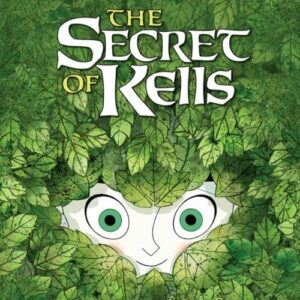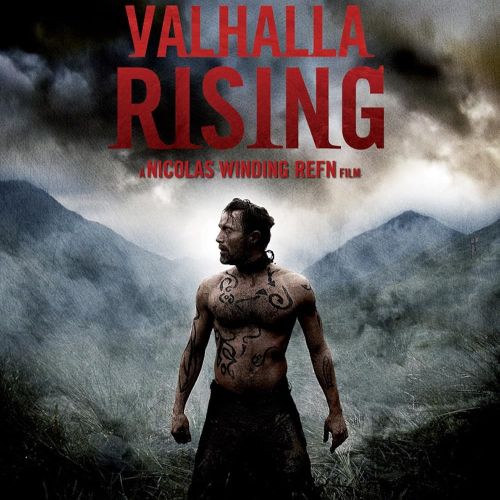The Secret of Kells (2009)
| Description | |
|---|---|
| Country of Origin | Ireland, France, Belgium |
| Language | English |
| Genre | Animated |
| Cast | Evan McGuire, Brendan Gleeson, Christen Mooney, Mick Lally, Michael McGrath |
| Directed by | Tomm Moore, Nora Twomey |

Tomm Moore and Nora Twomey’s 2009 animated feature The Secret of Kells is a visually stunning film that blends Celtic mythology, monastic history, and artistic symbolism into a rich narrative tapestry. Set in 9th-century Ireland during the time of Viking invasions, the movie centers around a young boy named Brendan who lives in the fortified monastery of Kells. As Brendan defies his uncle, Abbot Cellach, and ventures into the mystical forest beyond the monastery walls, he embarks on a transformative journey that reveals the power of creativity, faith, and ancient knowledge. But beyond its award-winning animation and critical acclaim, The Secret of Kells stands out for its deep-rooted connection to Irish mythology and folklore, making it a unique and culturally significant film.
Mythological elements permeate every frame of The Secret of Kells. The film is steeped in pre-Christian Celtic beliefs and animistic traditions, blending them seamlessly with the early Christian context of illuminated manuscripts. The enchanted forest Brendan enters is not just a backdrop—it is alive with ancient magic, guarded by the mysterious and otherworldly spirit Aisling, a wolf-girl who embodies the essence of Irish myth. Aisling is a pivotal character drawn from a long tradition of shapeshifters, fae, and nature deities in Celtic lore. Her ethereal presence and supernatural abilities contrast beautifully with the structured, rule-bound world of the abbey, symbolizing the harmony that once existed between the spiritual and natural realms.
One of the most mythologically rich sequences in the film involves Brendan retrieving the Eye of Colm Cille, a magical crystal guarded by Crom Cruach, a monstrous, serpent-like deity. Crom Cruach is an actual figure from Irish mythology—an ancient god to whom human sacrifices were once offered before the Christianization of Ireland. In the film, Crom is depicted as a swirling, abstract form that is more of a force of chaos than a physical enemy. This mythological reference grounds the story in the deep spiritual and cultural tensions that shaped early Irish society, highlighting the clash and eventual synthesis of pagan and Christian worldviews.
The Book of Kells, which serves as the central object of the plot, is itself a legendary artifact. Though the actual book is a real illuminated manuscript created by Celtic monks, the film treats it as a mystical tome filled with divine light and power, capable of dispelling darkness. This symbolic use of the book elevates it from a historical artifact to a mythical relic, representing knowledge, preservation of culture, and the light of imagination during a time of violence and fear. Brendan’s journey to help finish the book is framed as a heroic quest, mirroring the archetypal path of the hero in Celtic legends—a young protagonist guided by magical beings, overcoming supernatural obstacles, and returning home transformed.
Visually, The Secret of Kells draws heavily from Celtic art and mythological symbolism. The animation style mimics the interlacing patterns and intricate geometry found in the actual Book of Kells, with swirling lines and organic shapes creating a dreamlike landscape. This design choice reinforces the mythological atmosphere of the film, where reality blends with legend, and where even the most mundane elements carry spiritual significance.
Another layer of mythology is embedded in the film’s use of light and darkness. The invading Norsemen are portrayed as shapeless shadows with red eyes, not fully human but more like apocalyptic forces out of ancient prophecy. The darkness they bring is not only physical destruction but symbolic of the loss of culture, knowledge, and tradition. The monks, and especially Brendan, respond not with violence but with illumination—literally through the creation of the Book. This narrative of light overcoming darkness echoes many mythological cycles of death and rebirth, a central theme in Celtic cosmology.
The Secret of Kells also pays homage to the bardic tradition of Ireland. Storytelling, oral tradition, and visual symbolism are all core components of ancient Irish myth, and the film integrates these in both form and content. Aisling’s haunting song, the use of pictorial storytelling through animation, and Brendan’s evolution from novice monk to guardian of mythic knowledge all reflect the film’s deep reverence for the ancient ways of preserving wisdom.
In essence, The Secret of Kells is not just a retelling of historical events or an artistic endeavor—it is a myth in itself. It reimagines a pivotal moment in Irish history through the lens of legend, showing how myth can offer hope, identity, and spiritual resilience. For viewers interested in mythology, spirituality, and the enduring power of stories, this film offers a profound and moving experience. It is a cinematic tribute to the rich tapestry of Irish myth and the enduring legacy of the scribes and seers who kept the light alive in the darkest of times.


